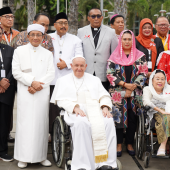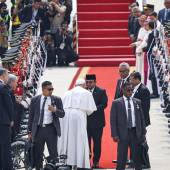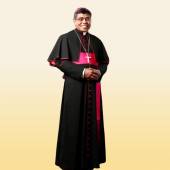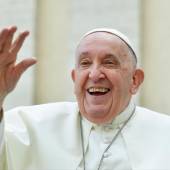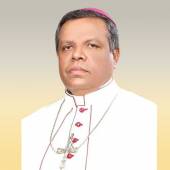Jakarta Cathedral, Istiqlal Mosque: Symbols of religious tolerance in Indonesia
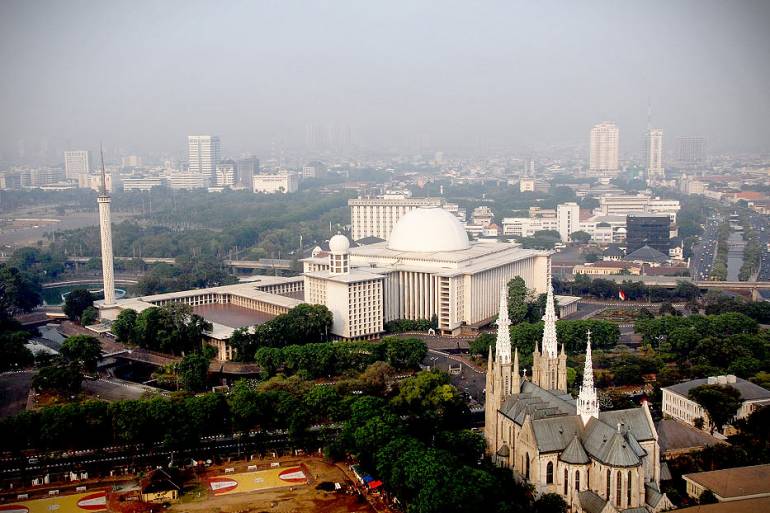
Indonesia, with its over 17,000 islands, is the world’s most populous Muslim-majority country; however, some of its citizens practice other religions including Hinduism, Buddhism, Confucianism, and Christianity.
At both the national and local levels, interfaith dialogue and relations have impacted both positively and negatively on the life of Indonesians, while the nation continues its efforts to ensure its constitutional provision that guarantees the freedom of religion.
One prominent example of interreligious relations is the Cathedral of Our Lady of the Assumption (Gereja Santa Maria Pelindung Diangkat ke Surga) in Jakarta, which is located right across from Jakarta’s largest mosque, the Istiqlal mosque.
Their proximity is not coincidental: the mosque was situated close to the cathedral to symbolize the nation’s philosophy of “Bhinneka Tunggal Ika” (unity in diversity), an idea inscribed on the Indonesian coat of arms, that promotes the desire for a land where all religions co-exist in peace and harmony.
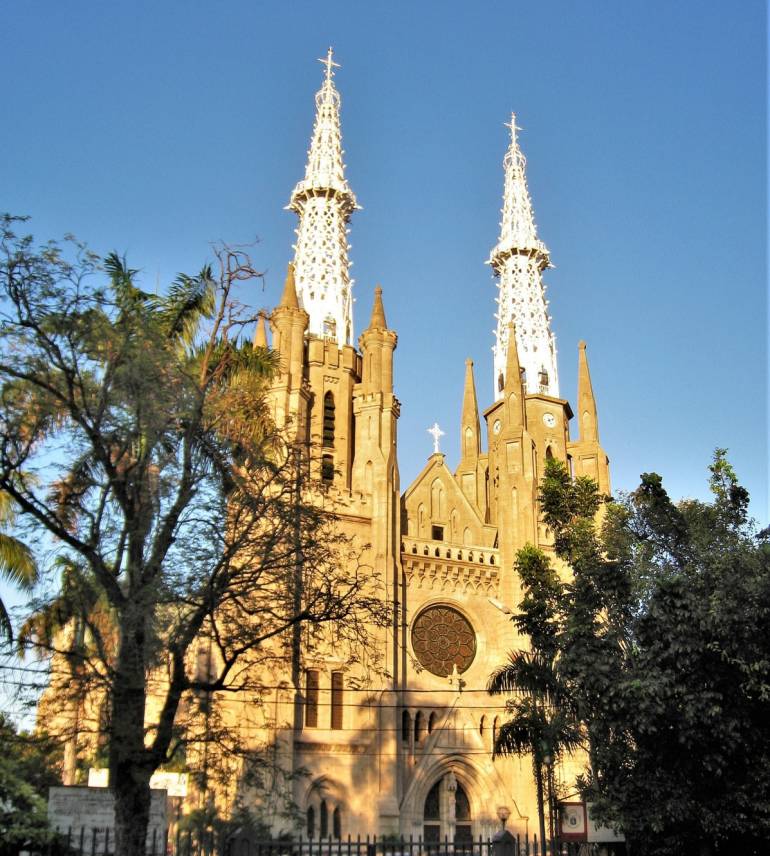
The Cathedral of Our Lady of the Assumption
Susyana Suwadie, the Public Relations officer of the diocese of Jakarta and the Cathedral Church spoke with Vatican News explaining the landmark historical Cathedral and its relationship to the mosque.
She explained that the work of building a neo-Gothic style cathedral began in 1890 but had to be suspended for lack of funds. The work continued in 1899 and was finally completed and consecrated on 21 April 1901.
The architect behind the building, Dutch Jesuit Fr. Antonius Dikjman, took into account the earthquake-prone nature of the island, building the ceiling with teak from the Indonesian forests and the tower with a mixture of stone and metal.
The church is designed in the shape of a cross, with thick walls made to support teak beams that form the roof. The main altar, tabernacle, and gold cross were made in the Netherlands in the 19th century and installed in 1956. The altar to the left of our lady was completed in 1915, and the altar of St. Joseph to the right was completed in 1922.
The cathedral also sports a museum that traces the origins of Catholicism in the country to Portuguese traders and missionaries such as Jesuit St Francis Xavier, who visited and baptized thousands of locals.
Suwadie points out distinctive features of the cathedral which include a statue of Our Lady dressed in traditional Indonesian Batik, with a crest of the Indonesian coat of arms on her chest. On her robes, two famous Indonesian puppets which represent wisdom and prosperity are visible.
She notes that the Cathedral serves as a central point for many Catholics in the area who often come in large numbers for Masses on Sunday.
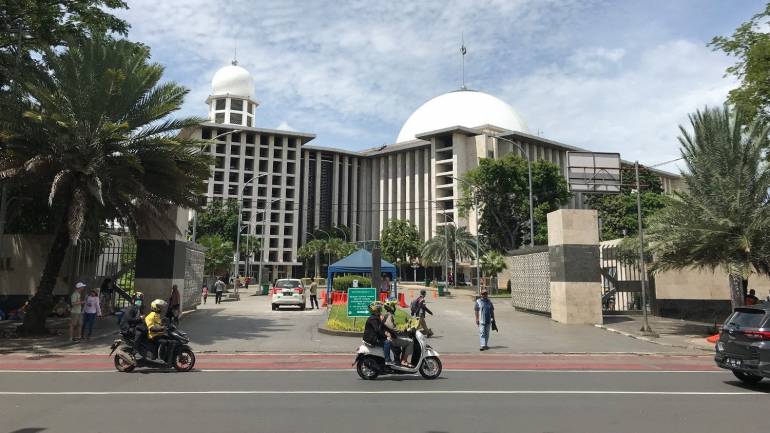
Istiqlal Mosque
The Istiqlal Mosque, located across the road from the Cathedral was designed in 1954 by Frederich Silaban, a Christian architect from North Sumatra.
A PR official for the mosque explained that Istiqlal means “independent”, a reminder of Indonesia’s struggle for national Independence which is symbolized by the building. The idea for a national mosque was inspired by Muslim leader KH Wahid Hashim and executed by Cokro Aminoto, then minister for religious affairs.
The mosque covers 22 acres and has five levels in total, representing the five pillars of Islam. A lot of the structure is made from marble from East Java. It has a 45-meter dome and its single tower is 6,666 metres tall – an allusion to the 6,666 verses of the Quran.
The awe-inspiring main prayer hall is covered in a red ornate rug and is separated in sections - the right side for women and the left for men. There are also some Arabic calligraphies on the wall which spell the name of Allah and Muhammed. The prayer hall opens into a large courtyard with individual rectangular prayer spaces, all facing in the direction of Mecca.
A peculiar characteristic of this national mosque is the presence of a large drum made of cowhide - the front from the skin of a bull and the back from the skin of a cow. The PR official explains that they are used for the summons to prayer. He also explained that former US president Barack Obama is among the many dignitaries that have paid a visit to the prestigious mosque.
Brotherhood tunnel
The proximity between the Cathedral and the mosque has fostered cooperation with one another, especially with the use of the parking lots by the adherents of the other religion. The mosque’s parking lot is used by the Christians during Easter and Christmas midnight Mass, and the same courtesy is extended to the Muslims during Eid prayers.
The two buildings are also linked by an underground tunnel that runs under the street separating them. It was named the “brotherhood tunnel” by President Joko Widodo and facilitates movement from one building to the other.
The tunnel, which will be decked with artwork in the near future, also signifies religious tolerance, nationality, and tradition, and, as it physically permits access between both compounds, it is hoped that that access will continue to foster fraternal collaboration and interreligious dialogue on the archipelago. - Vatican News
Radio Veritas Asia (RVA), a media platform of the Catholic Church, aims to share Christ. RVA started in 1969 as a continental Catholic radio station to serve Asian countries in their respective local language, thus earning the tag “the Voice of Asian Christianity.” Responding to the emerging context, RVA embraced media platforms to connect with the global Asian audience via its 21 language websites and various social media platforms.









